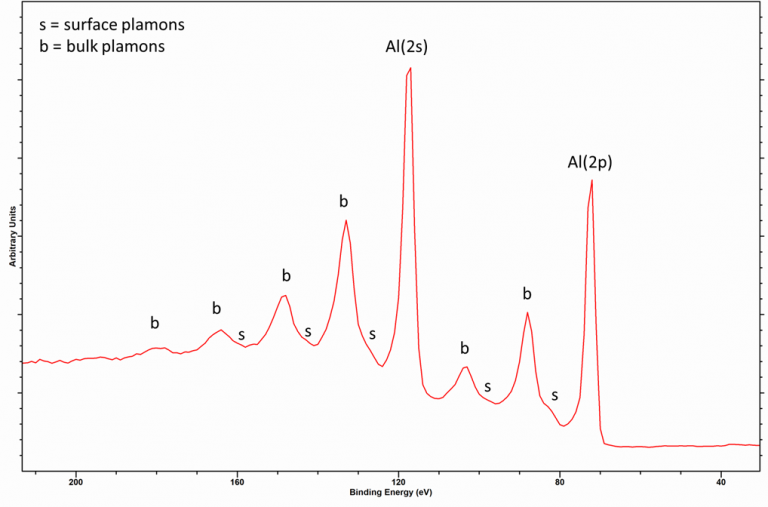Materials possessing a high density of free electrons around the fermi level are susceptible to plasmon formation during photoemission. Such examples are Al, Si, Na and Mg, although insulating materials such as TiO2 can also exhibit such features due to core-hole formation causing the transfer of valence electrons into the conduction band
The figure below shows such plasmon features for sputter cleaned metallic Al, with surface (s) and bulk (b) plasmons evident a repeating binding energy values (11.2 eV and 15.8 eV intervals for the surface and bulk plasmons respectively)

So what are plasmons?
Plamons are just oscillations in the ‘sea’ of electrons around the fermi level. These are formed as the electrons within the conduction band move to counter the sudden change in charge density during photoemission. A percentage of these electrons ‘miss their target’ setting up these collective oscillations in the conduction band.
The change in charge density can arise from the passage of fast electrons or the core-hole formation. Plasmons arising from electrons are called extrinsic plamons whilst those from core-holes are termed intrinsic plamons.